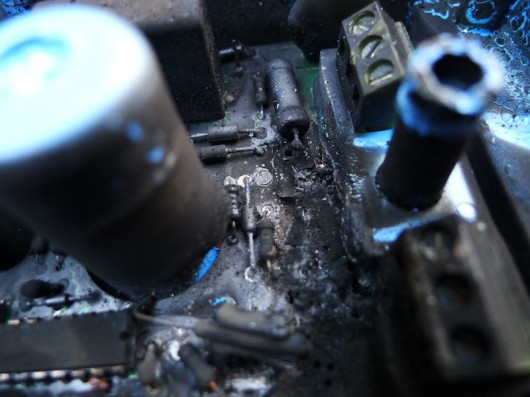Internet, Even When the Lights go Out
As a Kenyan company based in Nairobi, we know first-hand the challenges of dealing with power cuts. So we built a router that stays online when the lights go out.

Juliana, when the lights went out, in Tanzania
Our team was down in South Africa, a couple weeks ago, which has some power issues that they’re working through. This means different neighborhoods have their electricity turned off at different times to save energy, also known as load-shedding. It seemed that not too many South Africans have had to deal with this kind of problem, unlike the rest of us in the rest of Africa. They didn’t have a fallback plan for when the power went out.
In-built Power, by Design
Each BRCK has a full 8-hours of power up-time and a smart charge controller that keeps the battery topped up and ready for the unexpected. Designed for seamless failover between Ethernet and 3G, the BRCK can connect to your primary ISP and then automatically switch to a 3G provider when it senses that your internet has been interrupted.
BRCK was designed to survive the rigors of Africa. Here we suffer daily with power outages, brown outs and power surges. From day one we realized we needed to work hard to help smooth this out to make the internet work the way you want it, when you want it.
BRCK has built in 8000mAh of battery, enough to charge your phone or tablet more than twice. This battery provides power to the 3G, WiFi and Ethernet capabilities of the BRCK, which isn’t a small hotspot, but enough to connect 20 device to and running at full speed.
The use of micro-USB cables also allows your device to be charged from your laptop, wall plug, iphone charger, power bank or even another BRCK. We’ve included a USB charging port as well to allow you to charge your phone or tablet from your BRCK.
BRCK’s protected supply is unique in that it will continue to work from 4V right through to 18V from a standard 5V micro-USB connector. And if you go above, below or somehow reverse the wiring BRCK will pause charging, but keep running until the power comes back again. We’ve even optimized the charging circuit to run off raw solar panels without a step up or inverter.
All this charging ruggedness, combined with BRCKs proprietary network switching and fail over means you and your colleagues can keep on doing what you need to do even when the lights go off.


